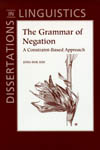

|
|
|
|

The Grammar of NegationA Constraint-Based Approach This book addresses three fundamental questions in the study of negation: What are the main ways of expressing sentential negation? What are the distributional properties of lexically-encoded negative elements? And, what implications do the answers to these two questions have for the theory of grammar? In answering these questions, Jong-Bok Kim investigates various aspects of negation in Korean, English, French and Italian. Addressing both empirical and theoretical issues relating to negation in these languages, he develops a nonderivational, lexicalist analysis within the constraint-based framework of Head-Driven Phrase Structure Grammar. This work demonstrates that a constraint-based approach can capture the distributional possibilities of negative elements and explain related phenomena simply through their lexical properties and the interaction of the elementary morphosyntactic and valence properties of syntactic heads. The resulting constraint-based theory allows a conservative division of labor between morphology and syntax. In turn, this challenges derivational analyses that are built upon the interaction of movement operations and functional projections with an alternative that achieves broader coverage and a better level of explanation. was an assistant professor at the Department of English Language and Literature, Kyung Hee University, in Seoul, Korea. Contents
1/1/2000 ISBN (Paperback): 1575862301 (9781575862309)
Subject: Linguistics; Grammar --Negatives; Head-driven Phrase Structure Grammar (HPSG) |
Distributed by the
University of Chicago Press |
|
pubs @ csli.stanford.edu
|
CSLI Publications
Stanford University Cordura Hall 210 Panama Street Stanford, CA 94305-4101 (650) 723-1839 |